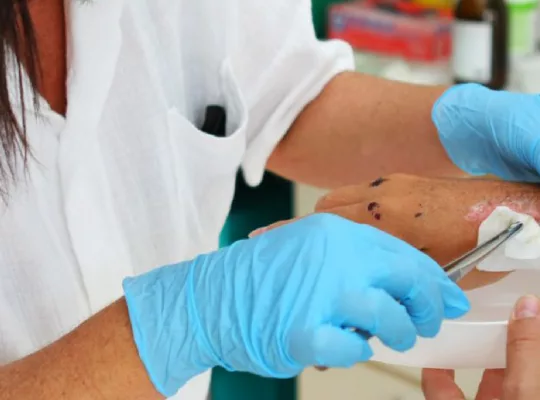Your pulse is your heart rate, or the number of times your heart beats in one minute. Pulse rates vary from person to person. Your pulse is lower when you are at rest and increases as you exercise. As your body becomes used to more exercise, your heart becomes more efficient and your resting heart rate will be lower. Knowing how to take your pulse can help you evaluate your exercise program. You can see how high your pulse is during exercise and see how long it takes for it to return to your resting norm.
How to take your heart rate
- Place the tips of your index, second and third fingers on the palm side of your other wrist below the base of the thumb. Or, place the tips of your index and second fingers on your lower neck on either side of your windpipe.
- Press lightly with your fingers until you feel the blood pulsing beneath your fingers. You may need to move your fingers around slightly up or down until you feel the pulsing.
- Use a watch with a second hand, or look at a clock with a second hand.
- Count the beats you feel for 10 seconds. Multiply this number by six to get your heart rate (pulse) per minute.
Count your pulse: _____ beats in 10 seconds x 6 = _____ beats/minute
What is a normal pulse?
Normal Heart Rates at Rest:
- Children (ages 6 – 15) 70 – 100 beats per minute
- Adults (age 18 and over) 60 – 100 beats per minute
If you have any more questions or concerns about your heart rate, you should consult your doctor.





